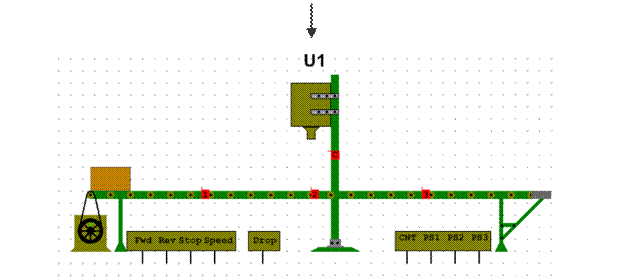Climate
Climatronic – один из вариантов реализации системы управления в салоне микроклиматом. Существуют различные конструктивные исполнения, но Climatronic предназначен для автоматического управления смешиванием горячего и холодного воздуха, при этом поступление холодного воздуха обеспечивается применением кондиционера. Подобная схема работы основана на сравнении заданной и фактически достигнутой температуры в салоне.
Для реализации подобного режима в контроллер управления Climatronic приходит информация от электронных датчиков, она обрабатывается по заданному алгоритму, и согласно полученным результатам на исполнительные механизмы выдаются управляющие сигналы. Даже в случае возникновения каких-то неисправностей Climatronic переходит в аварийный режим и выполняет свои функции. Системы существующего климат-контроля, используемые на современных автомобилях, отличаются большим разнообразием, позволяя создавать наиболее комфортные условия при движении как для водителя, так и для пассажиров. Для этого могут применяться такие системы, как 4-х зонные устройства, удовлетворяющие индивидуальные запросы каждого, находящегося в машине.
Climate Climate encompasses the statistics of temperature, humidity, atmospheric pressure, wind, precipitation, atmospheric particle count and other meteorological elemental measurements in a given region over long periods. Climate can be contrasted to weather, which is the present condition of these elements and their variations over shorter periods. A region's climate is generated by the climate system, which has five components: atmosphere, hydrosphere, cryosphere, land surface, and biosphere. The climate of a location is affected by its latitude, terrain, and altitude, as well as nearby water bodies and their currents. Climates can be classified according to the average and the typical ranges of different variables, most commonly temperature and precipitation. The most commonly used classification scheme was originally developed by Wladimir Köppen. Spatial Synoptic Classification systems focus on the origin of air masses that define the climate of a region. Climate (from Ancient Greek klima, meaning inclination) is commonly defined as the weather averaged over a long period. The standard averaging period is 30 years, but other periods may be used depending on the purpose. Climate also includes statistics other than the average, such as the magnitudes of day-to-day or year-to-year variations. The Intergovernmental Panel on Climate Change (IPCC) glossary definition is: Climate in a narrow sense is usually defined as the "average weather," or more rigorously, as the statistical description in terms of the mean and variability of relevant quantities over a period ranging from months to thousands or millions of years. The classical period is 30 years, as defined by the World Meteorological Organization (WMO). These quantities are most often surface variables such as temperature, precipitation, and wind. Climate in a wider sense is the state, including a statistical description, of the climate system. The difference between climate and weather is usefully summarized by the popular phrase "Climate is what you expect, weather is what you get." Over historical time spans there are a number of nearly constant variables that determine climate, including latitude, altitude, proportion of land to water, and proximity to oceans and mountains. These change only over periods of millions of years due to processes such as plate tectonics. Other climate determinants are more dynamic: the thermohaline circulation of the ocean leads to a 5 °C (9 °F) warming of the northern Atlantic Ocean compared to other ocean basins. Other ocean currents redistribute heat between land and water on a more regional scale. The density and type of vegetation coverage affects solar heat absorption, water retention, and rainfall on a regional level. Alterations in the quantity of atmospheric greenhouse gases determines the amount of solar energy retained by the planet, leading to global warming or global cooling. The variables which determine climate are numerous and the interactions complex, but the climate change are concerned. Modern climate classification methods can be broadly divided into genetic methods, which focus on the causes of climate, and empiric methods, which focus on the effects of climate. Details of the modern climate record are known through the taking of measurements from such weather instruments as thermometers, barometers, and anemometers during the past few centuries. The instruments used to study weather over the modern time scale, their known error, their immediate environment, and their exposure have changed over the years, which must be considered when studying the climate of centuries pas Climate change is the variation in global or regional climates over time. It reflects changes in the variability or average state of the atmosphere over time scales ranging from decades to millions of years. These changes can be caused by processes internal to the Earth, external forces (e.g. variations in sunlight intensity) or, more recently, human activities.
Климат Понятие «климат» включает в себя статистику метеорологических измерений, таких как температура, влажность, атмосферное давление, ветер, осадки, количественный сост атмосферы и других в данном регионе в течение длительного периода. Климат отличается от погоды, которая является текущим состоянием этих элементов и их вариаций в более короткие периоды. Климат региона формируется в климатическую систему, которая состоит из пяти компонентов: атмосферы, гидросферы, криосферы, поверхности суши и биосферы. Климат региона зависит от широты, местности и высоты, а также наличия водоемов и их течений. Климаты могут быть классифицированы в соответствии со средним и типичными диапазонами различных переменных, чаще всего температуры и осадков. Наиболее часто используемая схема классификации была первоначально разработана Владимиром Кеппена. В пространственной классификации синоптических систем внимание сосредоточено на происхождение воздушных масс, которые определяют климат в регионе.
|





